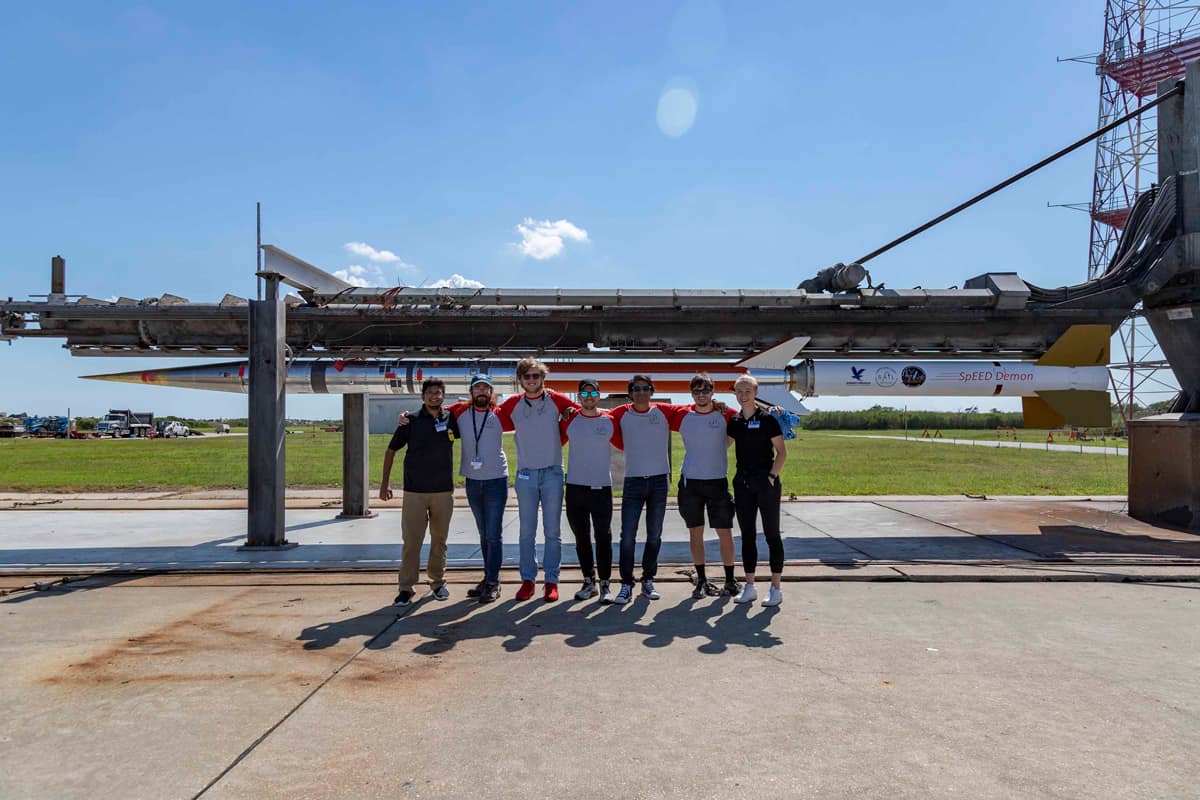Researchers in Embry-Riddle’s Space and Atmospheric Instrumentation Lab (SAIL) tested hardware on two recent NASA sounding rocket launches that are measuring the atmosphere and giving Eagles hands-on experience.
In August, the Sporadic-E ElectroDynamics Demonstration Mission, or SpEED Demon, launched from NASA’s Wallops Flight Facility in Virginia, testing new instruments slated to fly on several upcoming NASA rocket missions. The launch was especially successful because the rocket flew through a Sporadic-E layer, a cloud of dense plasma that can cause disruption of radio communication systems. Measuring these layers can help researchers better understand and predict future activity. The launch was in preparation for NASA launches that will fly two identical rockets into Sporadic-E layers from Kwajalein Atoll in the Marshall Islands in the summer of 2024.
Instruments aboard SpEED Demon, as well as aboard a rocket known as Endurance launched from Norway in May, were designed by Engineering Physics students in SAIL. Dr. Aroh Barjatya — professor of Engineering Physics, director of SAIL and the principal investigator on the launch project — says the students began working on the instruments as undergraduates and are now earning master’s and Ph.D. degrees in the program.
“My work on SpEED Demon … has helped me apply my knowledge gained in the classroom directly to a real NASA science mission.”
— Josh Milford (’22)
Recent Embry-Riddle graduate Peter Ribbens, who is starting a master’s degree in Engineering Physics, says he worked on the design, fabrication and testing of the telescoping booms, hinges, electronics boxes and sensitive gold-plated probe surfaces associated with the experimental payload of SpEED Demon.
“My work on SpEED Demon and other hands-on projects for Dr. Barjatya in SAIL has helped me apply my knowledge gained in the classroom directly to a real NASA science mission,” Ribbens says.
Recent graduate Josh Milford (’22), also starting a master’s degree in Engineering Physics, worked on low-cost magnetometers, which measure a magnetic field, since his sophomore year. The devices have launched aboard three CubeSats and most recently on SpEED Demon.
“SAIL demands a significant level of precision and perfection. Working in SAIL on these magnetometers has given me appreciation that it’s important to test-as-you-fly and fly-as-you-test, as Dr. Barjatya often says,” Milford says. “Working on this project has given me invaluable lab experience that has better prepared me to pursue physics academia and a career in space/atmospheric science.”
Research Associate Dr. Robert Clayton attended both launches, and Research Associate Dr. Shantanab Debchoudhury and Ph.D. student Rachel Conway worked on data analysis associated with both missions.
